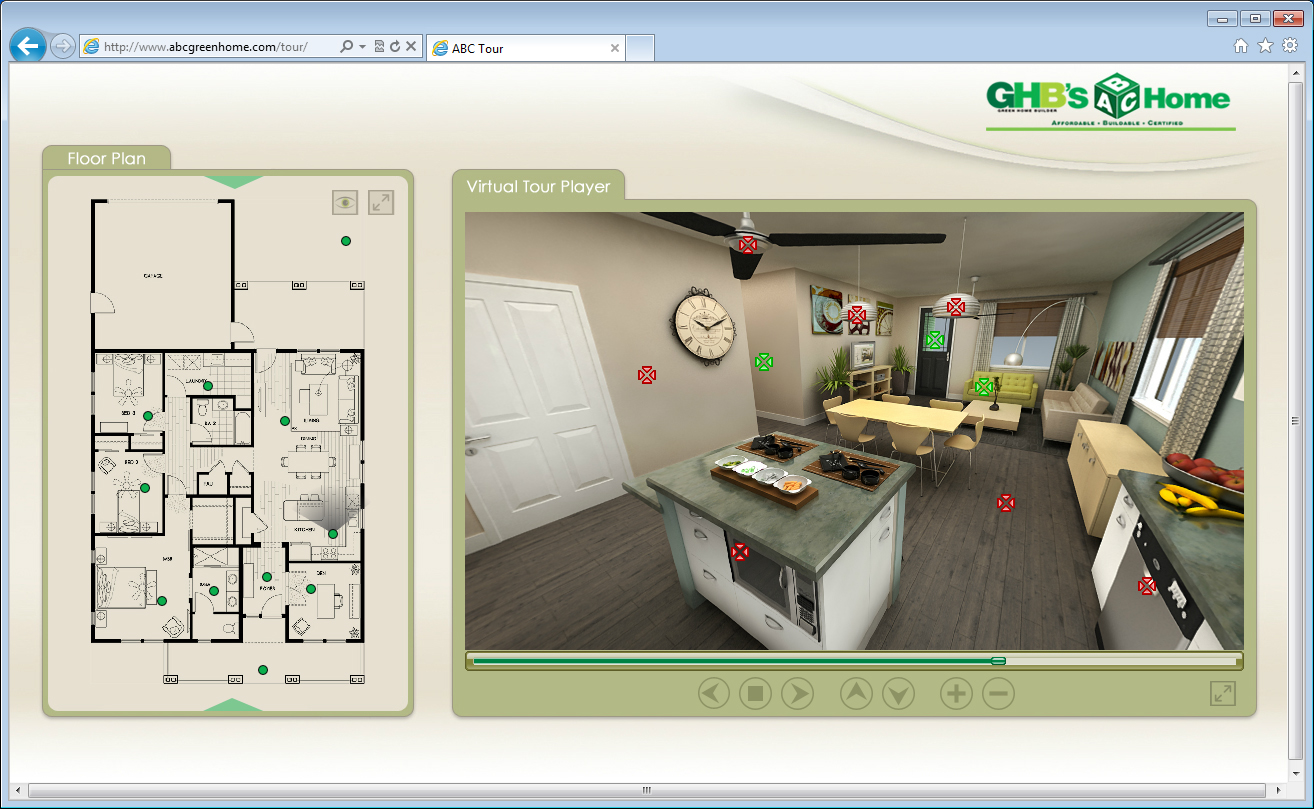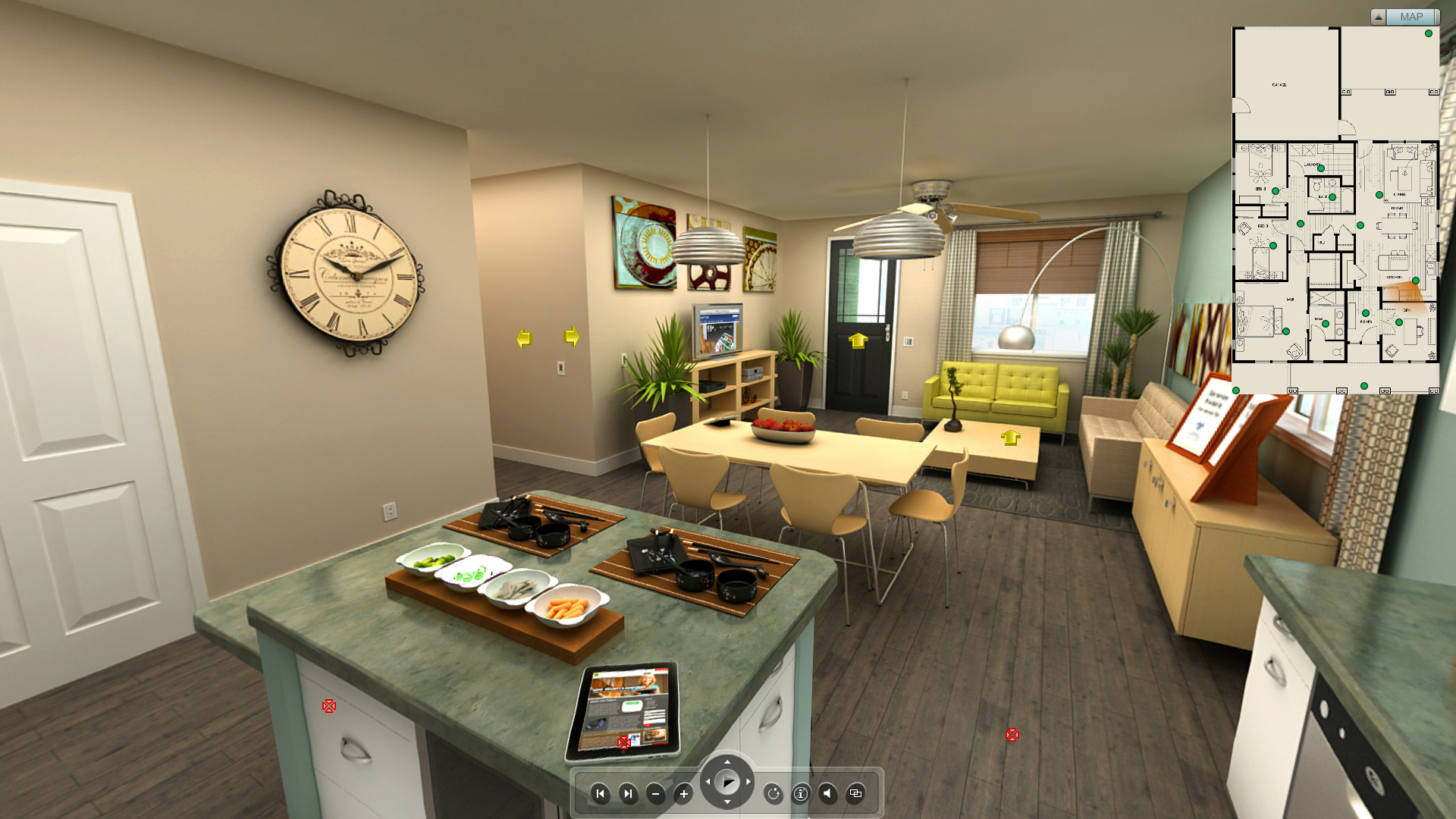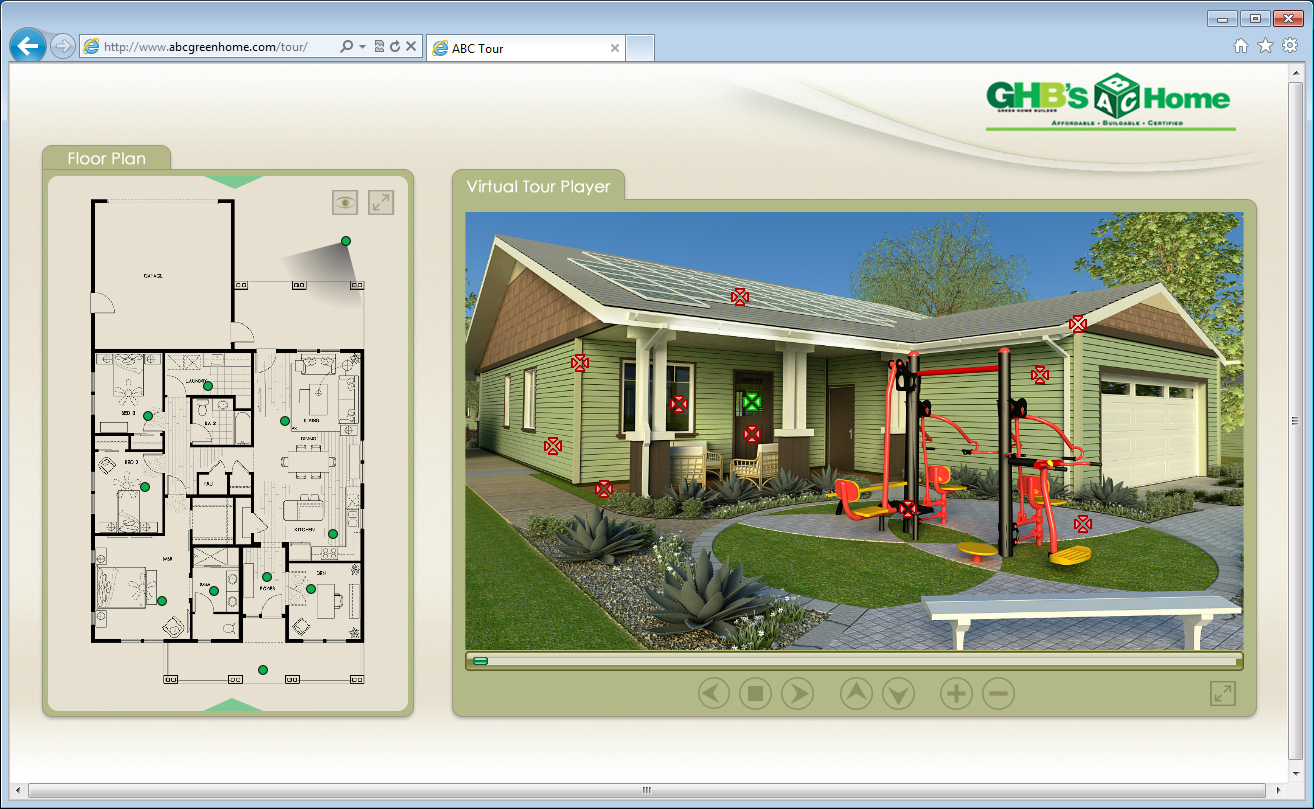A technology movement is happening in the real estate marketplace which promises to bring positive and permanent changes to how model homes are promoted, leased and sold. This movement is revolutionizing the way we communicate and market projects in all sectors of the industry. At the vanguard of this movement is Ripple CG, an architecturally trained, multimedia powerhouse providing high quality 3D visual assets and creative interactive presentations for the building and real estate industry. Currently flying off their shelves are their residential Virtual Tours.
Their Virtual Tours incorporate 3D animations, panoramas, renderings, CRM management, a project website, interactive tools to explore as well as all the usual assets necessary to populate a sales center like marketing collateral, large format prints, brochures and branding. “We’re constantly seeking to expand the capabilities of our product,” says Director of Operations Joe King. “The reward comes from watching our clients respond to their deliverables. Our efforts often go well beyond their expectations.” Ripple CG is transforming the way builders and developers sell product and how buyers experience real estate.
Today’s technologies allow companies to develop advanced interactive tools that make it easier and more efficient to sell products and ideas. To enhance efficiency, the appropriate assets, tools and technologies must be utilized. An interesting fact about virtual tours is that if you ask 10 professionals in the industry to define a Virtual Tour, you will get 10 different answers, mostly because they vary based on project need. Some are photography based interactive explorations; some are full interactive 3D explorations, some 2D, and some are carefully composed animated spaces with music and narrative. Moreover the audience varies which affects the overall presentation, for example, some are marketing oriented, some focused on design, some are jurisdictional, some are to inform, and some are all the above. This is just scratching the surface of the many considerations that should be well-thought-out before spending the time and money to develop a Virtual Tour. According to King, the true definition of a Virtual Tour is “a project presentation that contains engaging, interactive, visual assets making it easy and entertaining for the viewer to explore and understand architectural space.” That said King has developed a guideline that will help you ask the right questions and help to better understand the advantages of making the investment.
Choosing a Virtual Tour company: When looking for a company to develop your Virtual Tour you will save time and money if you find a well-rounded company that has the following capabilities:
- 3D Content: Such as photo realistic animations, renderings and panoramas. Ask for samples of their print materials as well as their animations and Panoramas. If the 3D samples don’t look like well composed photos, then move on.
- Print and Graphics: Including floor plans, brochures, and publications. It is important that they have a marketing background and can develop branded graphics in-house. They should have a working knowledge of print resolution for a variety of digital assets. For example, can they deliver an illustration at screen resolutions for online and video content as well as large format prints?
- Branding: Do they have the capability to brand your development and apply that to all digital assets related to your project? This includes logos, names, letterhead, brochures and web packages.
- Websites: Can they develop project websites. To save money ask if their Virtual Tour could be developed as their project website. If so you have just saved the cost of developing a project website.
- Interactive: Do they have the programming capability to develop custom functions necessary to meet your unique needs? Are they truly developing a solution for your needs and are their programming technologies compatible with multiple types of computers, laptops, and devices?
- Experience: Does their company staff have experienced, architecturally trained, artists that understand how the built environment works? Can they handle your deadlines? How flexible are they on making changes without significant additions to the base budget? Can they effectively and efficiently interface with your design team and their digital pipeline?
Advantages of developing a Virtual Tour for your project: When considering developing a Virtual Tour for your next project consider the advantages it may bring.
- Access and Speed: Potential buyers can access your Virtual Tour anytime, anywhere, from HD displays or personal computers to smart tablets. Buyers don’t have to leave the comfort of their own homes to explore a community or model unit.
- Cost Savings: Experience dramatic cost savings in reducing the number of model homes that need to be built.
- Sell More Homes Faster: Builders can presell targeted phases and test the market before ground breaks. The Virtual Tour makes it easier to make interior or exterior aesthetic modifications to accommodate changing market demands and tastes.
- Prevent Costly Mistakes: Building a Virtual Tour is like constructing a model home on site. Everything has to be measured, constructed and fit together. If there were a discrepancy in the design, it would be caught during the modeling phase of the Virtual Tour and brought to the clients’ attention thus, preventing costly mistakes before the actual homes are built.
- Online Marketing Advantages: The home buying experience online has dramatically increased as time and travel distances are becoming more and more valuable to people. Today 70-80% of all buyers begin their real estate search online. Over 50% of nearby online viewers will visit a project location after viewing the online virtual tour. As a result, any properly designed website will see increases in online traffic as prospective buyers visit and revisit the Virtual Tours. Here they will review and share links with friends, family members and colleagues. With embedded CRM, more qualified leads will be generated. Sales agents can use the interface to capture names, interests, emails and phone numbers. This is much more effective than a sign-in sheet in a model home. Home shoppers are provided with the most aesthetically engaging experience of a project. Virtual Tours can highlight attractive nearby amenities such as schools, parks and shopping centers.
- Create Opportunity: This is something new and forward thinking but smart companies are now creating opportunities for manufacturers of furniture, flooring, carpeting, cabinetry, fixtures and appliances to display their products within a builder’s Virtual Tour. Embedded in each room are links to vendor websites and catalogs. This unique advertising platform provides developers with the means to capture revenue while they sell homes through their Virtual Tours.
More and more builders are turning to Ripple CG to create their 3D Virtual Tours. Featured in Builder and Developer Magazine’s “Who’s Who in Green Building” for the third year in a row, Ripple CG boasts over 20 years of experience in the field. Unlike many 3D rendering companies, Ripple’s entire staff is architecturally trained, resulting in an outstanding product that is remarkably competitive in pricing.
“In our experience, an effective 3D Virtual Tour leads to pleased advertisers, satisfied builders and happy homebuyers,” King says. “The real estate industry is experiencing an exciting transformation, and any designer, developer or builder who isn’t taking advantage of this remarkable tool is in danger of being left behind.”


